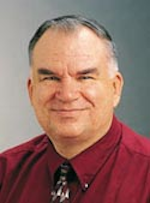How much oil can be produced from the Williston basin's Bakken and Three Forks formations?
The two formations have produced 450 million bbl since 2008, says the US Geological Survey, the year of the agency's previous assessment.
Continental Resources Inc., the top Bakken-Three Forks operator, calls this province a "massive oil field of unprecedented magnitude" covering 15,000 sq miles, 87% of which has been proven productive.
Continental estimates 32 billion bbl of oil to be recoverable at a 3.5% recovery factor, 36 billion bbl at 4%, and 45 billion bbl at 5%, and USGS says a mean of 8 billion bbl of oil and natural gas liquids remains to be discovered.
In an updated geology-based assessment it released at the end of April, USGS estimated that the two formations contain 6.723 tcf of undiscovered associated natural gas in addition to the 7.375 billion bbl of oil and 527 million bbl of NGL (OGJ Online, Apr. 30, 2013).
However, the undiscovered, technically recoverable volumes could range as high as 11.4 billion bbl of oil, 949 million bbl of NGL, and 11.2 tcf of gas, USGS reckoned.
The assessment covers parts of North and South Dakota and Montana. USGS noted that the formations extend into Saskatchewan and Manitoba but did not assess them in the Canadian provinces.
By itself, this play roughly doubles or triples the level at which US liquids proved reserves have sustained for years.
Resource summary
USGS charted six continuous (unconventional) and two conventional assessment units in the Bakken Total Petroleum System (see map, OGJ, Apr. 21, 2008, p. 37).
The 2013 assessment benefited from data from the more than 4,000 wells industry has drilled since the 2008 exercise.
Five of the continuous units are in the Bakken formation, and one continuous and one conventional unit are in the Three Forks formation. USGS didn't assess the Three Forks formation in 2008.
The agency said the Devonian and Mississippian Bakken formation consists of four members. In ascending order, they are the Pronghorn (formerly known as the Sanish sand), the lower shale, the middle, and the upper shale.
USGS said tallied maximum thicknesses of 58 ft for the Pronghorn, which is limited in areal extent, 56 ft for the lower shale member, 90 ft for the Middle Bakken, and 58 ft for the upper shale member, which covers the greatest areal extent.
The upper and lower shale members are the primary source rocks for the Bakken TPS.
The Pronghorn member of the Bakken unconformably overlies the Three Forks formation, which is divided into upper and lower units and reaches a maximum thickness of 270 ft. Continental sees great potential in the untouched lower Three Forks benches.
US reserves implications
The effects on US reserves of the Bakken-Three Forks and other US shale and tight oil plays the past decade is nothing short of astonishing.
Continental in late 2010, by which time 2,750 horizontal wells had been drilled in the Bakken, estimated that the Bakken and Three Forks would ultimately produce 24 billion boe, including 20 billion bbl of oil (OGJ Online, Feb. 16, 2011).
The North Dakota Geological Survey said the state's production peaked in March at 782,812 b/d of oil and 846,906 Mcfd with a record 8,634 wells producing and 440 awaiting completion.
Historically, US crude oil reserves had risen to 26-29 billion bbl by the mid-1950s. They reached 32.8 billion bbl in 1957 and remained above 30 billion bbl for more than a decade, peaking at 38.7 billion bbl in 1970, according to OGJ figures from the PennEnergy Research Center.
Having been in steady decline since 1970 to an OGJ-estimated 19.1 billion bbl in 2010-11, US oil reserves have begun to ascend again to 20.7 billion bbl in 2012-13.

Alan Petzet | Chief Editor Exploration
Alan Petzet is Chief Editor-Exploration of Oil & Gas Journal in Houston. He is editor of the Weekly E&D Newsletter, emailed to OGJ subscribers, and a regular contributor to the OGJ Online subscriber website.
Petzet joined OGJ in 1981 after 13 years in the Tulsa World business-oil department. He was named OGJ Exploration Editor in 1990. A native of Tulsa, he has a BA in journalism from the University of Tulsa.


